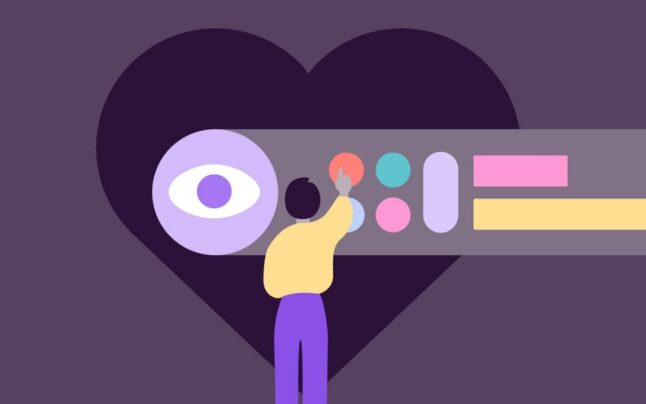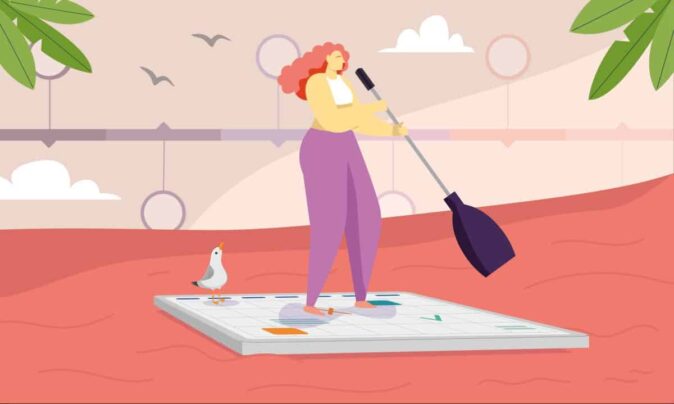Project managers employ many strategies to help them allocate resources more effectively, such as resource smoothing. Resource smoothing helps you manage your time and people better, but it can be an overwhelming process.
In this article, you’ll learn how resource smoothing can be done simply, using techniques and tools that simplify your job and drive results.
But first, let’s understand the fundamentals of resource smoothing.
What is resource smoothing in project management?
Resource smoothing is a project management technique. It adjusts resources to fit the baseline timeline without affecting the project’s critical path.
The main point of resource smoothing is to avoid over-assignment and ensure a more even distribution of resources across the project.
Benefits of resource smoothing
Resource smoothing helps you:
- Manage time efficiently: With resource smoothing, you distribute tasks evenly over the project timeline. Instead of cramming in activities and rushing at specific periods, you’ll find that tasks flow more steadily.
By doing so, you minimize idle periods and make every moment count.
- Prevent resource over-allocation: Overburdening your team or resources can lead to burnout and mistakes.
With resource smoothing, you can balance and distribute limited resources more evenly. That way, you avoid having overloaded or underutilized team members.
- Maintain high work quality: With tasks spread out and resources evenly allocated, team members can focus on delivering their best work.
They have the appropriate time and resources to pay attention to detail. This means fewer errors and higher standards throughout the project.
Resource smoothing examples
Let’s look at real-world examples of resource smoothing in action so you can understand the concept better.
- Website launch deadlines: Imagine a digital agency with a critical website launch in two weeks’ time.
Two web developers are working overtime, while a designer has spare time.
The project manager shuffles some tasks to take some work off his developer’s shoulders. He assigns the website’s graphic optimization to the designer and distributes the workload more evenly.
The team meets the launch deadline without any team member feeling overwhelmed.
- Ad campaign overlap: A graphic design agency handles ad campaigns for two clients simultaneously.
The first campaign requires intense graphic work and burdens designers.
In the second campaign, the team is free, waiting for client instructions.
To avoid burnout, the project manager transfers some design tasks to the waiting team. This way, both campaigns progress smoothly and on time.
- Digital tool transition: Imagine a digital agency is transitioning to a new design tool.
Most designers are busy learning the new software, while a few already know the tool.
Instead of halting other projects, the project manager reallocates tasks. Those who know how to use the new tool take on urgent design tasks. The others take time to train, which smoothens the transition without compromising client deliverables.
Resource leveling vs resource smoothing
Resource leveling and resource smoothing might sound similar, but they are not.
Here are the main differences between the two.

- Objective: With resource smoothing, you keep resource use below a set limit and don’t change the project’s end date. The primary constraint in resource smoothing is time.
Resource leveling balances resource needs with what’s available. So, you might push the project’s finish date out.
- Impact on project duration: Resource smoothing keeps the original project finish date by working within set time constraints.
Resource leveling may push the project end date further to prevent resource over-allocation.
- Flexibility: Resource smoothing offers more flexibility. You can adjust tasks as needed without surpassing resource limits.
Resource leveling stays more rigid as it prioritizes an even resource spread.
When to use each technique
Resource smoothing works best when you have a fixed end date and you need to manage resources without affecting this deadline.
For example, when working on seasonal campaigns that have a non-negotiable date.
Resource leveling is ideal when the main concern is the over-allocation of resources. These can lead to burnout or inefficiencies.
You can use resource leveling when a project’s completion date is flexible and your focus is on allocating resources efficiently.
How they can be combined for optimal results
Here are some steps on how you can use resource leveling and smoothing together:
- Understand your project: Dive deep into your project’s specifics, like deadlines or resource constraints.
- Begin with leveling: Identify any stretched-thin team members and level out their workload.
- Smooth within leveling: After you’ve balanced resources, ensure you aren’t overburdening anyone on particular days. Rearrange tasks within the timeline to maintain an even flow.
- Stay flexible: As tasks progress, situations can change. Regularly revisit your resource allocation. Make tweaks to accommodate any new challenges or changes.
- Keep an eye out: If your team starts to become overloaded down the line, first level out their workload. Then, apply smoothing to fine-tune their schedule.
- Communicate changes: Always keep your team in the loop about project changes.
- Review at crucial points: Don’t wait for the end. At pivotal project milestones, assess your resource allocations. Make any necessary adjustments to stay on track.
- Use tools: Project management tools can help you seamlessly integrate smoothing and leveling techniques.
What are the steps involved in resource smoothing?
Many people don’t properly understand resource smoothing.
Here’s a step-by-step guide on resource smoothing to set everyone straight.

Let’s look at each step more closely.
Step 1: Do you need resource smoothing?
The first question to ask is if you need resource smoothing.
To help you answer that, here are some scenarios when you might need to apply it:
- Non-negotiable project deadline: When there’s no room for delays, resource smoothing is a go-to technique.
It helps you redistribute tasks and resources and hit important end dates without compromise.
- Resource over-allocation: When team members are overloaded, it’s not just their well-being at stake. Your projects can face quality drops or delays.
Resource smoothing can help you redistribute tasks and ensure everyone has a manageable schedule.
- Project delays: Delays can be costly in terms of money and reputation.
Instead of pushing back deadlines, consider resource smoothing. It can help you catch up and stay on track.
- Resource availability constraints: When dealing with limited-access resources, every minute counts.
Resource smoothing helps you allocate these scarce resources wisely.
Step 2: Identify resources that have the capacity and availability
At the start of your resource smoothing process, it’s essential to spot which resources are in high demand and at what times.
Whether it’s a colleague buried under tasks or a tool constantly in use, the first step is pinpointing these over-allocated resources.
A resource usage chart can help you do that.
This visual can quickly highlight areas or times of excessive resource demand.
But project management software can be a game-changer if you need a more complex solution.
For example, the Availability Overview feature in Toggl Plan gives you a clear snapshot of your resources.

Use it to quickly visualize each member’s current workload so you can allocate tasks more effectively.
Toggl Plan also lets you categorize team members by skill sets. Group your team into multiple Team timelines based on their expertise.
For example, you can split them into Writers, Editors, Designers, etc.

By grouping your team members like this, you have a clear view of their skills, and you can allocate tasks accurately.
Another Toggl Plan feature that helps you visualize your available resources is the Time Off feature.
See each team member’s time off right on the team timeline so you can easily spot potential resource gaps.

Step 3: Allocate additional resources to the project
Once you gain visibility over project resources, you can reallocate and adjust tasks and schedules.
Change deadlines for less time-sensitive tasks or assign them to underutilized team members.
Do these processes sound like a lot of fuss? With a tool like Toggl Plan, managing your work and resources is easy.
On Toggl Plan’s Team Timeline, you can drag and drop tasks, modify their start and end dates, or add extra information.

You can create tasks and add multiple assignees in just a few clicks.

When changing things around is easy, you get more time to focus on essential tasks.
Step 4: Avoid scheduling conflicts
How can you sidestep scheduling clashes when adjusting project schedules?
Here are some tips:
- Check dependencies: When moving tasks around, remember their connections.
- Tap into Toggl Plan’s alerts: Toggl Plan’s Time Off feature warns you about overlaps, like if you’re booking someone on their vacation.

- Mind the holidays: If your team is remote, track their local holidays. Toggl Plan already has this covered, with built-in local public holidays.
- Regular reviews: Things change. Regularly review schedules to dodge resource conflicts and make project planning more efficient.
Step 5: Monitor resource workloads
The last step of your resource smoothing process is actively monitoring resource workloads.
Why do this?
It will help you spot any potential bottlenecks so you can solve them before they become worse.
Here are some tips and tools that will help you keep a close eye on your resources and schedules:
- Track project progress: Match your project’s expected progress with the actual results.
You can do that easily with the Project Progress overview feature in Toggl Plan.

This feature shows your task progress and compares estimated and actual time spent on tasks.
- Use Toggl Plan’s Team Timelines: Get a bird’s-eye view of everyone’s tasks and availability. That way, you spot potential problems or overloads early on.
- Integrate with Toggl Track: You can track time spent on tasks with Toggl Track in just a few clicks.

Knowing who works on what and how much time tasks take helps you allocate work more accurately.
Use resource smoothing to deliver projects on time
You’ve seen by now that resource smoothing can help you:
- Manage resources effectively
- Improve team productivity
- Meet project deadlines
Toggl Plan can also help you make the most of your project resources. Sign up for a free Toggl Plan account and discover how.
Work tools to elevate your productivity – apps for incredibly simple time tracking and effective project planning.

![How To Make A Project Schedule? [A Step-by-Step Guide]](https://toggl.com/blog/wp-content/uploads/2024/01/project-schedule-673x404.jpg)
